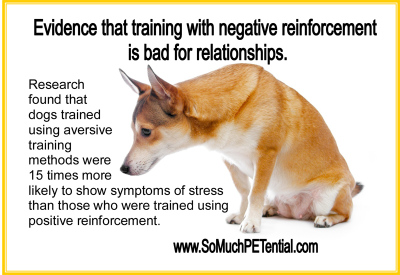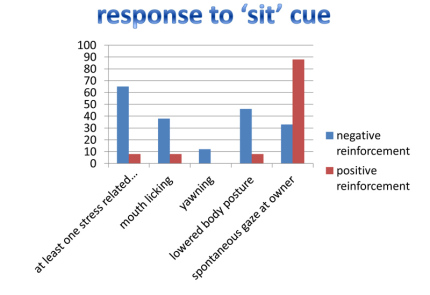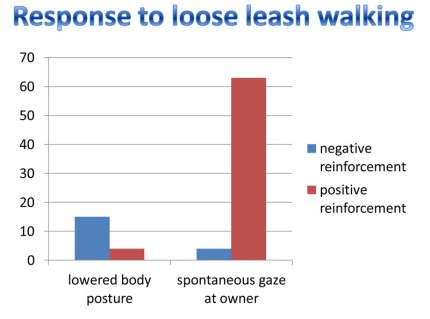I have long been an advocate for using the most positive strategies for managing and modifying behavior because I have seen firsthand the difference in how that approach has helped to not only set myself and my pets up for success, but also the impact it has had on our relationship. And I have seen similar effects with those with whom I have worked.
Science did not have to tell me that was the best, most humane approach as I’ve seen it with my own eyes. However, it is still great to have scientific data that has been tested and proven.
Last year, the results of one such study by Stephanie Deldalle and Florence Gaunet of the University of Paris-Nord and the Laboratoire de Psychologie Cognitive were published in the Journal of Veterinary Behavior. What they found was that dogs trained using aversive training methods  were 15 times more likely to show symptoms of stress than those who were trained using positive reinforcement.
were 15 times more likely to show symptoms of stress than those who were trained using positive reinforcement.
The research involved observing two dog training schools and their students participating in advanced training classes that taught dogs to sit and walk on a loose leash. One class ( with 24 dogs/owners) taught primarily using positive reinforcement such as food, petting, play and praise to increase the frequency of the wanted behaviors, while the other (with 26 dogs/owners) taught primarily using negative reinforcement (the removal of an aversive stimulus) such as collar corrections, a stern voice, and pushing the dogs into a sit. The dogs represented a diverse cross section of breeds and ages, just as their owners were also from a diverse range of social backgrounds.
The observer looked at the owners’ behavior, and the dogs’ behavior including the dogs’ body postures when walking on a loose leash and when told to sit.
What did the data show?
As many as 65% of the dogs in the negative reinforcement class showed at least one stress-related behavior compared to only 8% of those in the positive reinforcement class.
 Additionally, a much smaller percent of dogs in the negative reinforcement based class gazed at their owners in both exercises. That higher frequency of
Additionally, a much smaller percent of dogs in the negative reinforcement based class gazed at their owners in both exercises. That higher frequency of  looking at their owner supports the researchers’ hypothesis that training with positive reinforcement based methods contributes to a better canine-human relationship. Gazing less at their owners suggests those dogs may initiate fewer social interactions and pay less attention to their owners, which would make training that much more challenging.
looking at their owner supports the researchers’ hypothesis that training with positive reinforcement based methods contributes to a better canine-human relationship. Gazing less at their owners suggests those dogs may initiate fewer social interactions and pay less attention to their owners, which would make training that much more challenging.
Dr Florence Gaunet, from Aix-Marseille University, in France, who led the study, told The Telegraph: “What we noticed is that it was bad for the relationship to be trained “negatively”. They were more likely to show a lower posture and more signs of stress. Of course there are concerns about welfare.
“There are welfare issues with the negative method. There is a trade-off between obedience and welfare. It is an ethical question. All countries need dogs that are under the control of humans, but I think it requires more thinking how this is done. We are now trying to think more about welfare and I think we should be more careful.”








